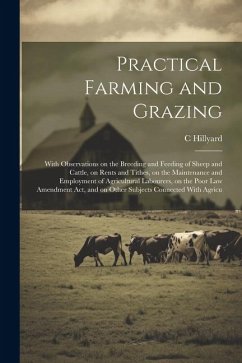
How to Handle Sheep for Profit
Versandkostenfrei!
Versandfertig in über 4 Wochen
14,99 €
inkl. MwSt.
Weitere Ausgaben:

PAYBACK Punkte
7 °P sammeln!
"How to Handle Sheep for Profit", originally published in 1913, provides comprehensive guidance on the principles and practices of successful sheep farming. Authored by Frank Kleinheinz and John Clay, this classic work offers practical advice on all aspects of sheep management, from selecting breeds to feeding, breeding, and marketing. Detailing methods for maximizing wool and meat production, this book serves as an invaluable resource for both novice and experienced farmers. Readers will gain insights into effective strategies for disease prevention, pasture management, and overall herd healt...
"How to Handle Sheep for Profit", originally published in 1913, provides comprehensive guidance on the principles and practices of successful sheep farming. Authored by Frank Kleinheinz and John Clay, this classic work offers practical advice on all aspects of sheep management, from selecting breeds to feeding, breeding, and marketing. Detailing methods for maximizing wool and meat production, this book serves as an invaluable resource for both novice and experienced farmers. Readers will gain insights into effective strategies for disease prevention, pasture management, and overall herd health. A timeless guide, "How to Handle Sheep for Profit" remains relevant for anyone seeking to understand the fundamentals of profitable sheep farming in the modern era. This work has been selected by scholars as being culturally important, and is part of the knowledge base of civilization as we know it. This work was reproduced from the original artifact, and remains as true to the original work as possible. Therefore, you will see the original copyright references, library stamps (as most of these works have been housed in our most important libraries around the world), and other notations in the work. This work is in the public domain in the United States of America, and possibly other nations. Within the United States, you may freely copy and distribute this work, as no entity (individual or corporate) has a copyright on the body of the work. As a reproduction of a historical artifact, this work may contain missing or blurred pages, poor pictures, errant marks, etc. Scholars believe, and we concur, that this work is important enough to be preserved, reproduced, and made generally available to the public. We appreciate your support of the preservation process, and thank you for being an important part of keeping this knowledge alive and relevant.












